Will Reinstalling Windows 10 Delete My Files
Nosotros recently experienced an installation of Windows 10 with system files that were corrupt to the betoken that certain sections of the Settings app would automatically close when beingness opened, among other bugs around the platform.
After attempting typical repair options, we used a Windows ten ISO to perform an in-place upgrade, reinstalling Windows 10 while keeping our applications and all.
If this sounds familiar, we accept covered a similar process using Windows 10'due south congenital-in "Reset this PC" pick, but that removes your programs and merely retains your files and settings on the newly installed operating system, whereas again, the in-identify upgrade fifty-fifty preserves the software you have installed.

Running an in-place upgrade worked to prepare our case of Windows x that couldn't otherwise be repaired with Command Prompt commands such as SFC /scannow and DISM /Online /Cleanup-Image /RestoreHealth - neither of which would end their operation on our installation.
The reinstallation can exist initiated from within Windows using the setup.exe file on a Windows 10 ISO/USB drive or from the Media Cosmos tool, and the process took around one-half an hour to finish on our desktop PC.
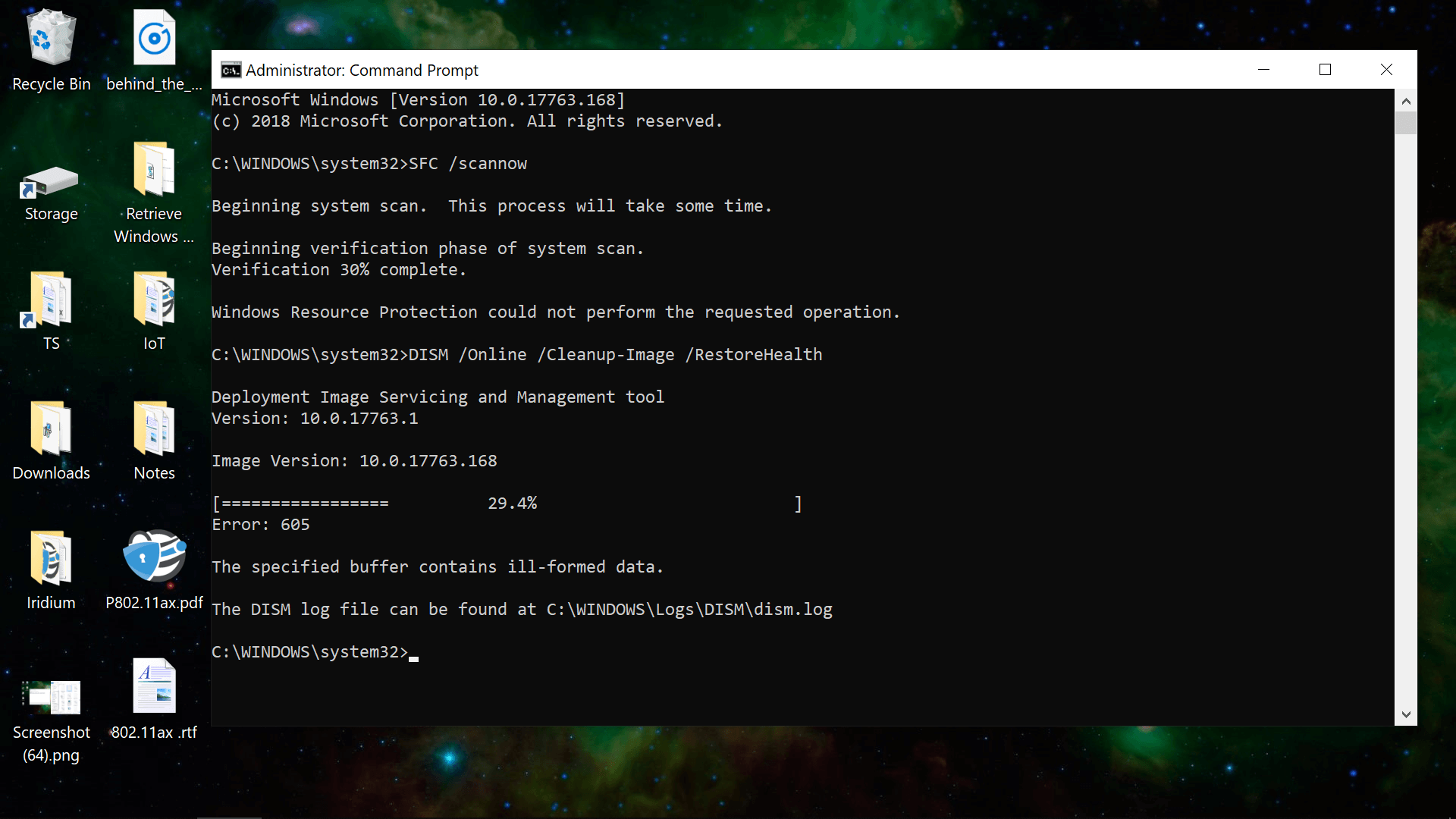
Since fifty-fifty your applications are retained on the resulting installation, if all goes as planned you won't take to do much afterward and it'south certainly a path of less resistance compared to fully reinstalling Windows.
Getting started with an in-identify upgrade
For starters, the in-place upgrade isn't an selection if you tin can't boot into your installation. Y'all must be logged in to a Windows account and that business relationship must take administrator access. If you lot're not an admin, you volition be prompted for credentials when launching the installer.
To check if you accept an admin business relationship, search Get-go for "change account type" or go to Control Panel\User Accounts\User Accounts\Manage Accounts\Modify an Business relationship\Change Account Type where all of the accounts on your Windows installation should be listed and those with admin-level access will say "Administrator."
Double-click your account then click "Change the business relationship blazon" for the option to go from a Standard user to an Administrator.
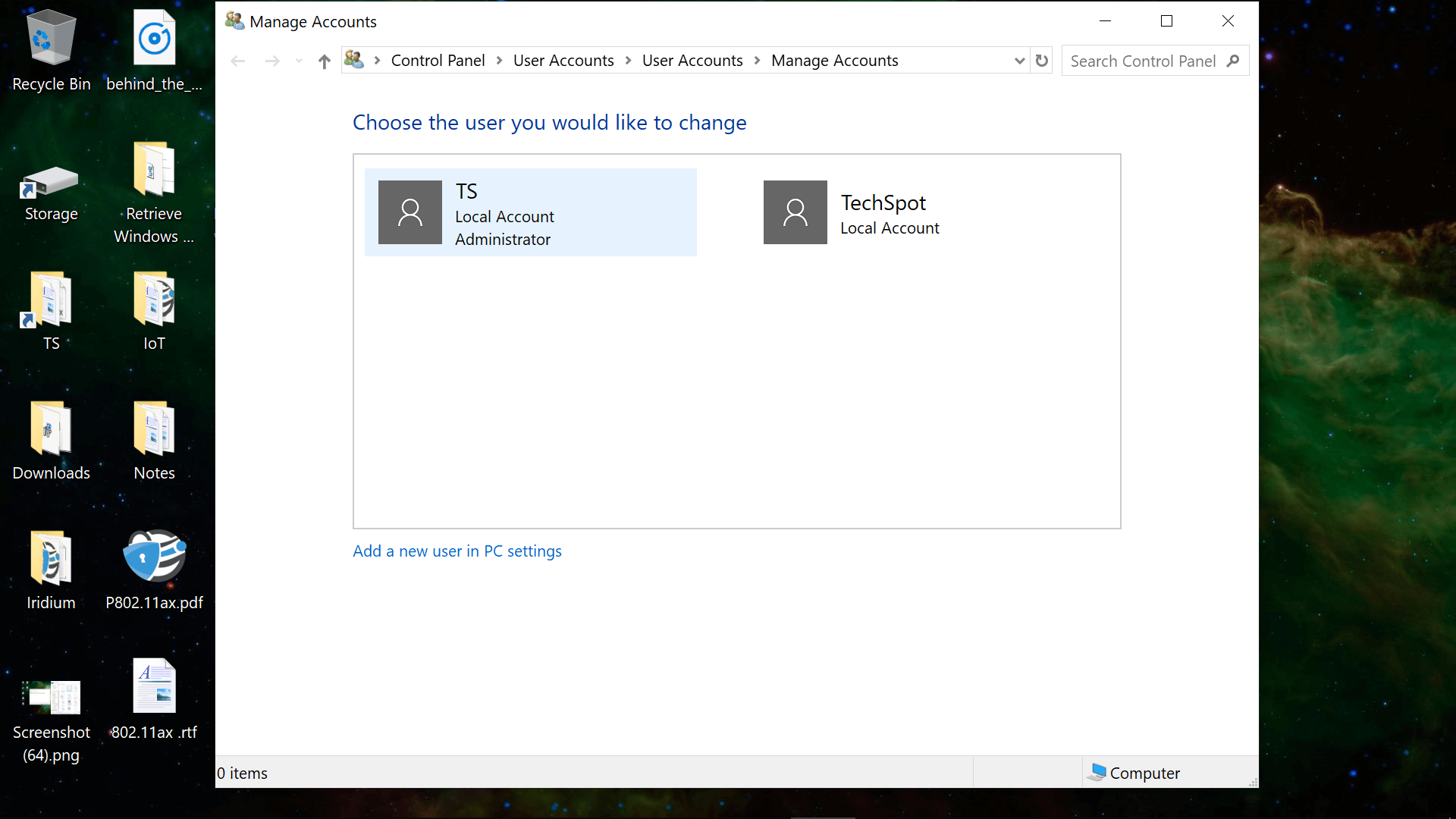
You can also detect this information by searching Start for Netplwiz.exe. With that application open, select your business relationship and go to Properties and so the Group Membership tab for the Standard user/Administrator toggle.
If yous're unable to make your account an administrator, note that the Windows administrator account is disabled by default and can be enabled from an elevated Command Prompt:
internet user administrator /active:yeah | enables ambassador account (relog)
net user | lists all Windows accounts including the administrator account
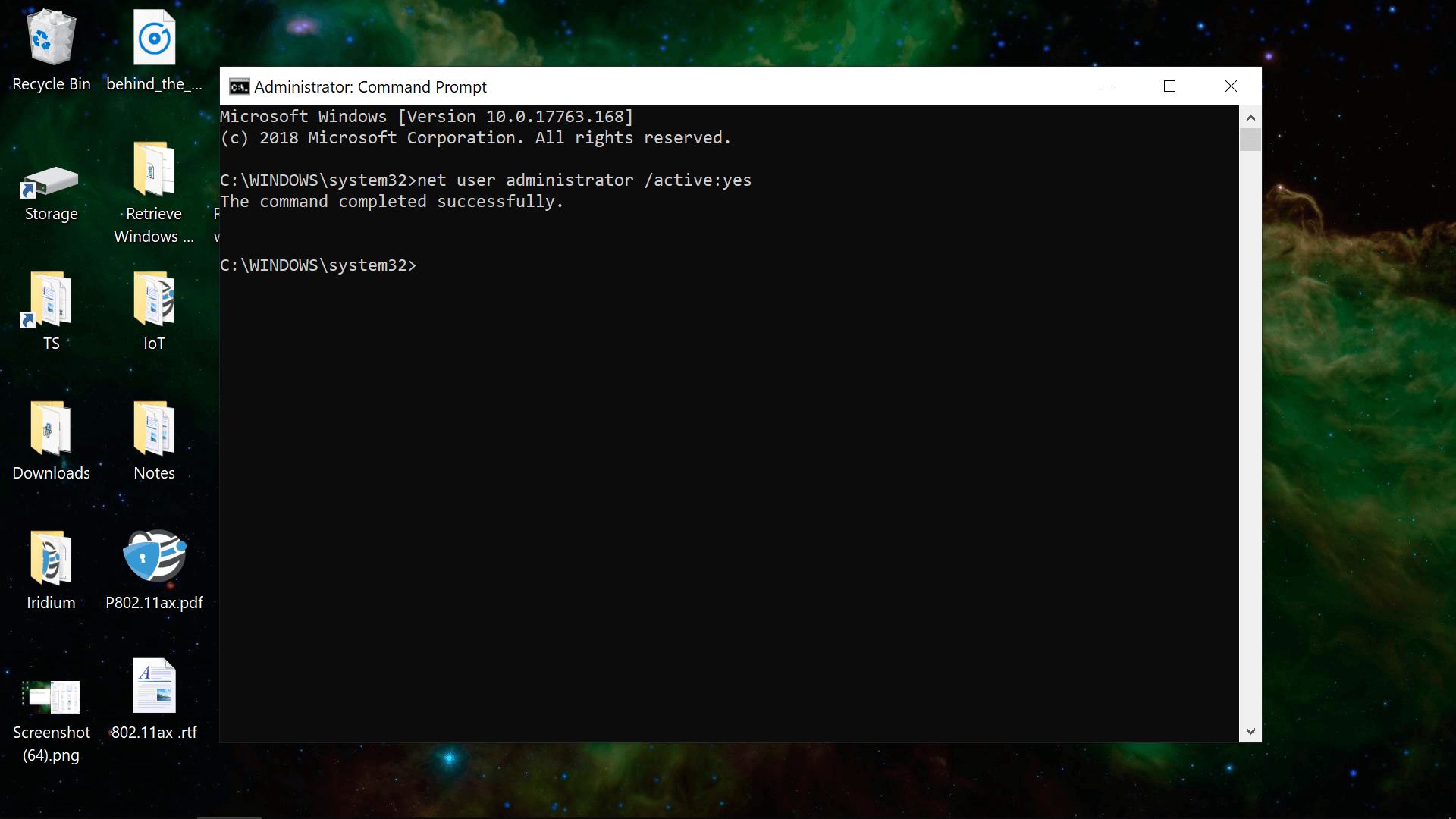
Equally another requirement for the in-place upgrade, your Windows ISO/USB drive/Creation Tool must contain the aforementioned edition of your operating organisation (or newer), as well as the same language and compages (32/64-flake).
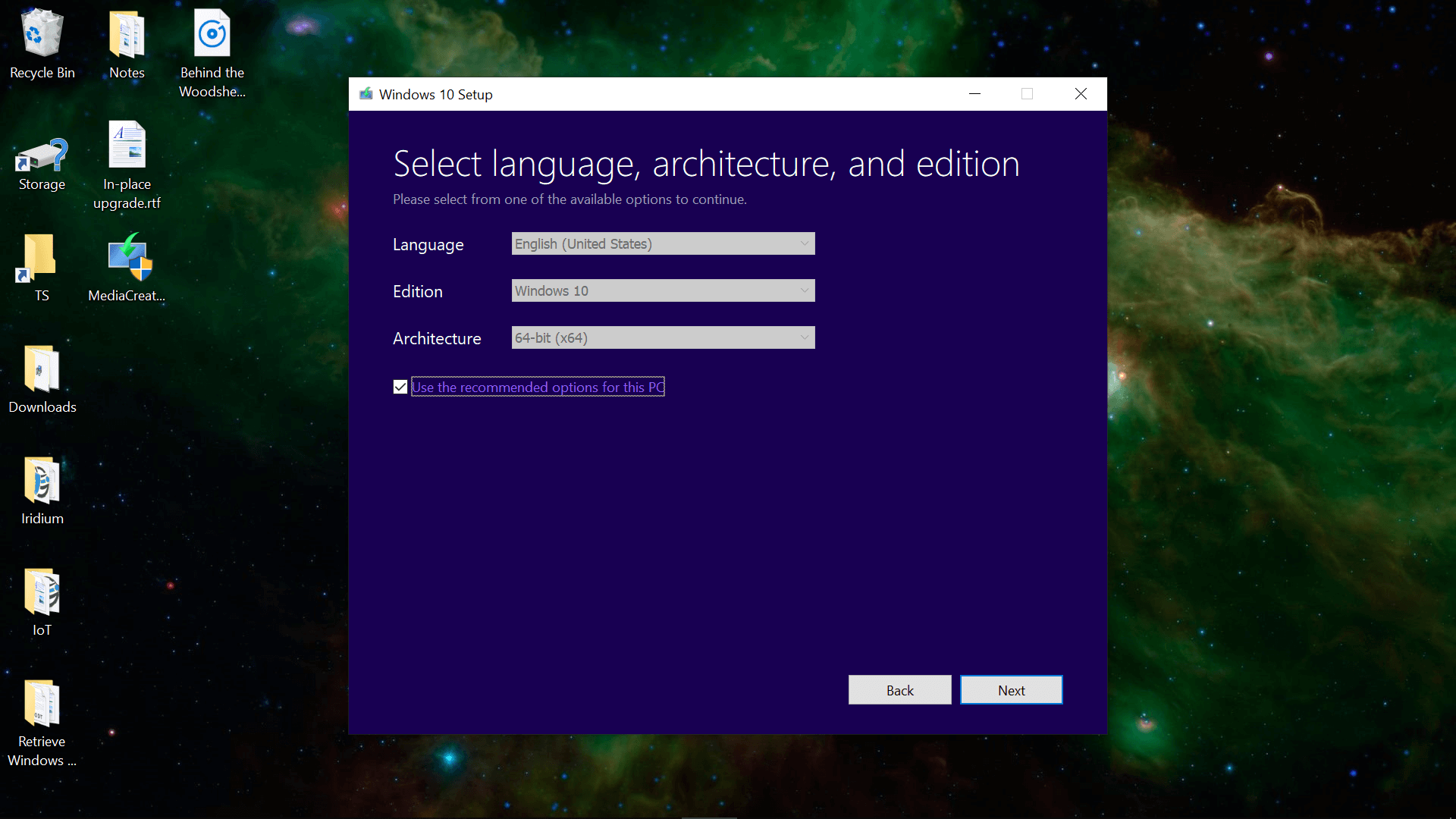
You'll also need some spare storage on the Windows drive -- around 8GB when nosotros tested.
Conveniently, this step in the installation will help you lot with storage information, displaying capacity usage for different areas of your operating organization, and you can also choose a secondary/external storage device from a driblet-down menu of every drive fastened to your PC.
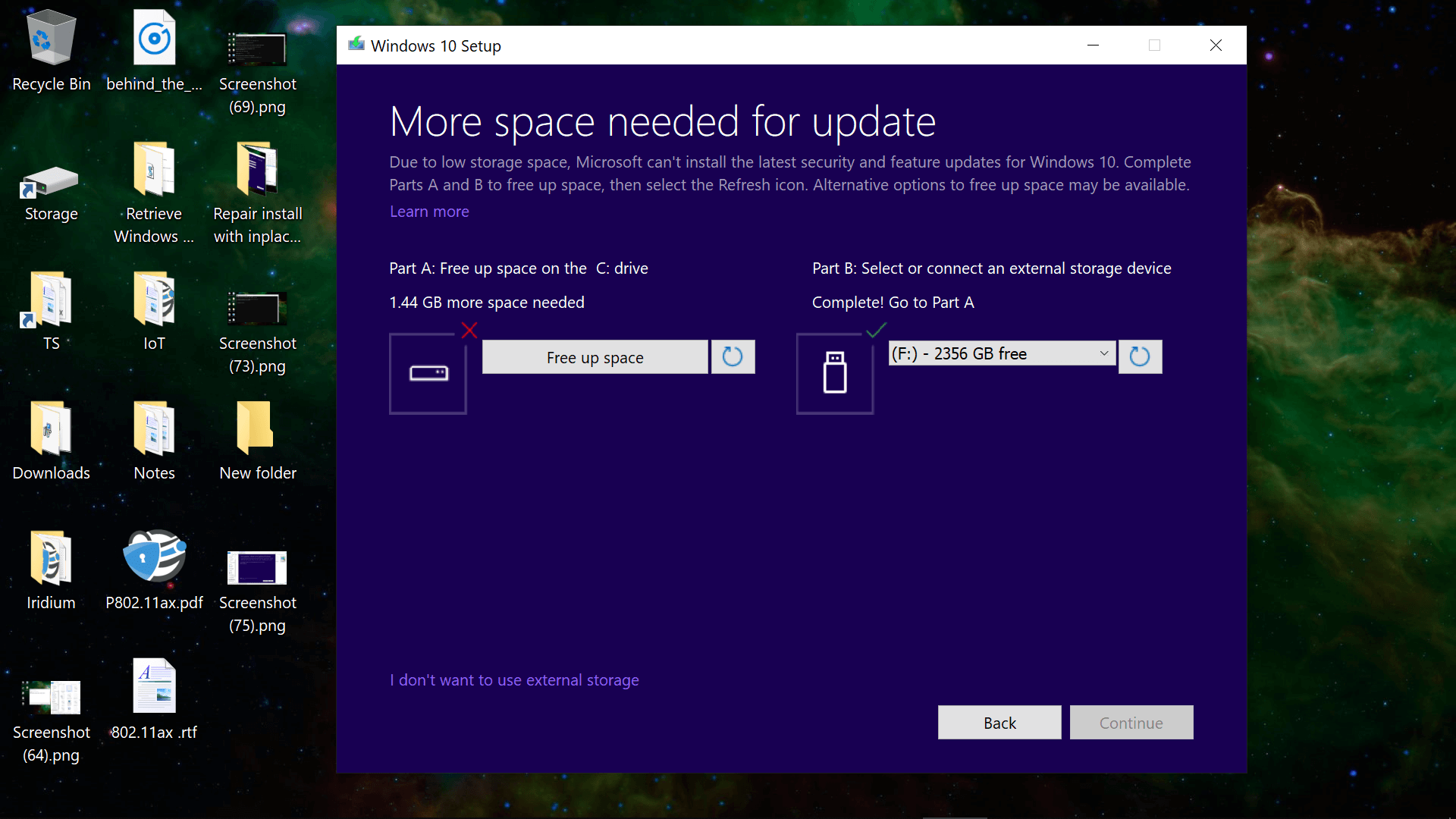
Although you'll keep all of your files and software, the reinstallation volition delete certain items such every bit custom fonts, organization icons and Wi-Fi credentials. Notwithstanding, as part of the process, the setup will also create a Windows.former folder which should accept everything from your previous installation.
If y'all have a UEFI system with Secure Kick enabled, it'south suggested that you disable Secure Boot before starting the in-place upgrade and so re-enable the feature later.
Actually starting the in-identify upgrade
Beginning the Windows setup (setup.exe) past mounting the ISO or opening the Windows USB installation bulldoze from the File Explorer.
Windows x has native support for mounting ISOs by right-clicking and choosing Mountain or past using the post-obit PowerShell command (our installation was so broken that the right-click option wasn't bachelor to us):
Mountain-DiskImage -ImagePath "C:\FileName.ISO"
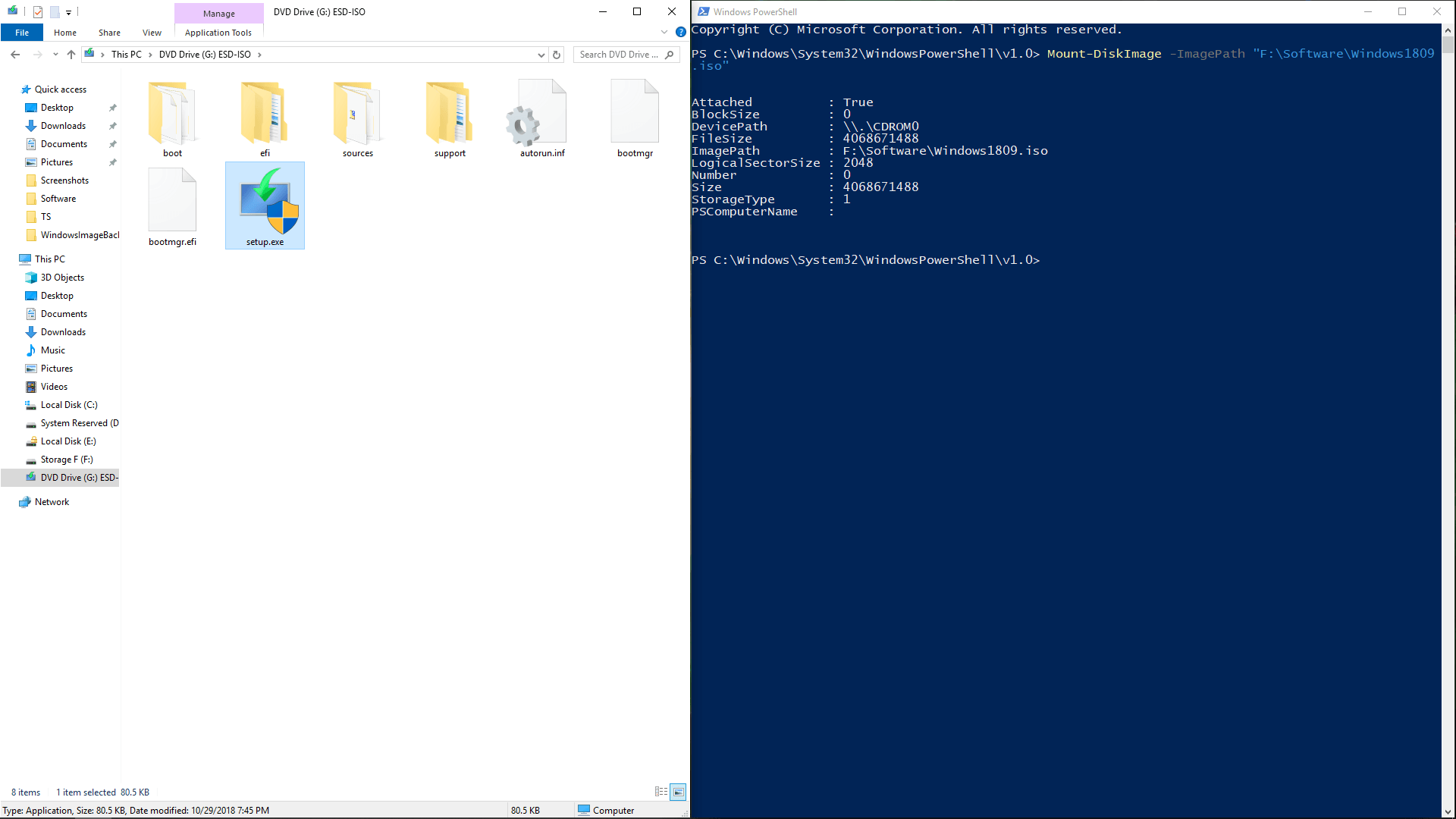
After launching setup.exe or the Media Cosmos tool, you'll have the option to upgrade now or to create an installation ISO/USB drive -- you lot want to Upgrade this PC now. You might exist prompted to download updates prior to this pick being available.
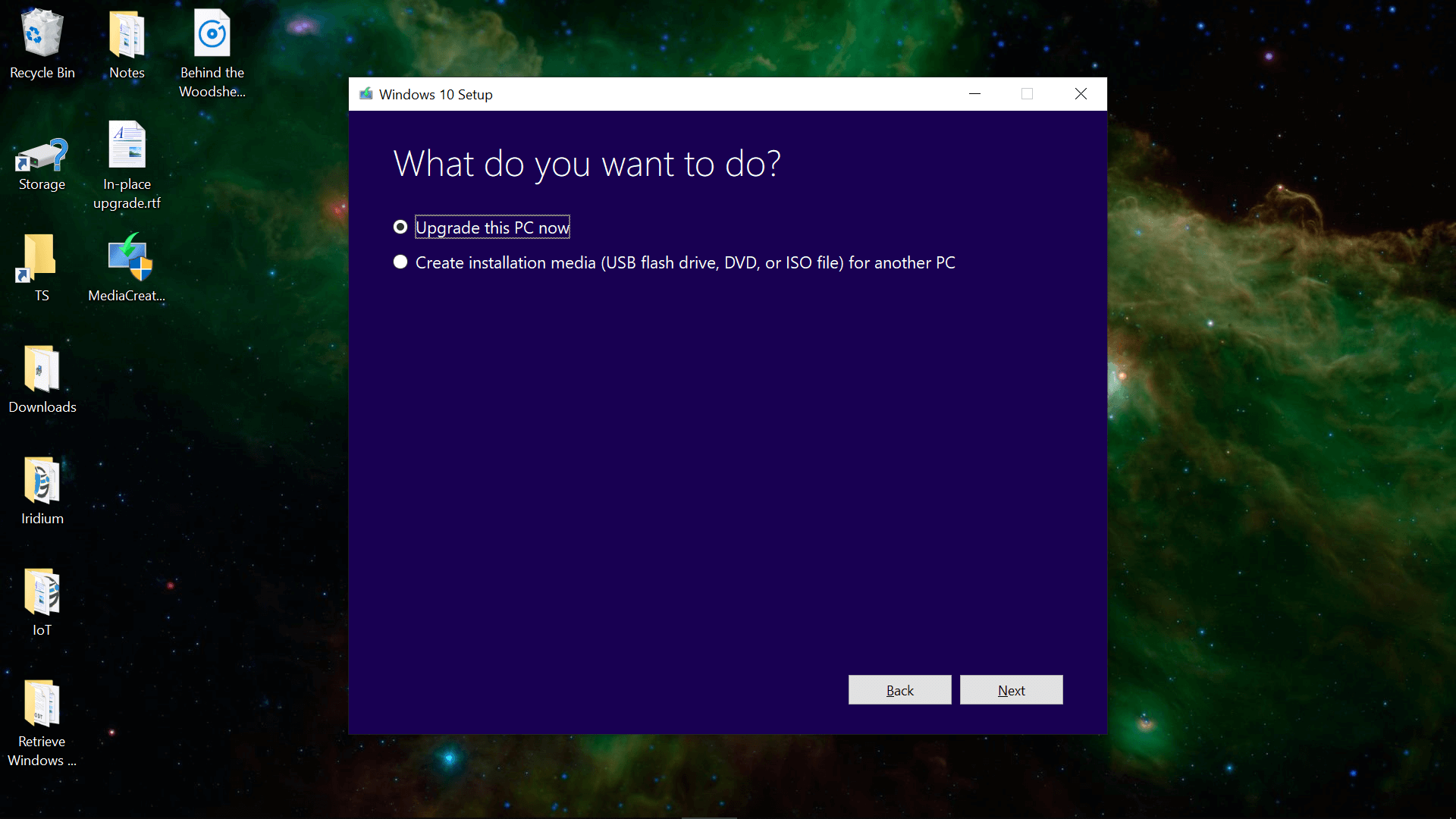
The installer will perform some initial setup/scans and somewhen ask what you want to go on on the new copy of Windows.
If you intend to proceed your currently installed software on the repaired operating organisation, make certain that "apps" are listed and not only "files" (Proceed personal files and apps).
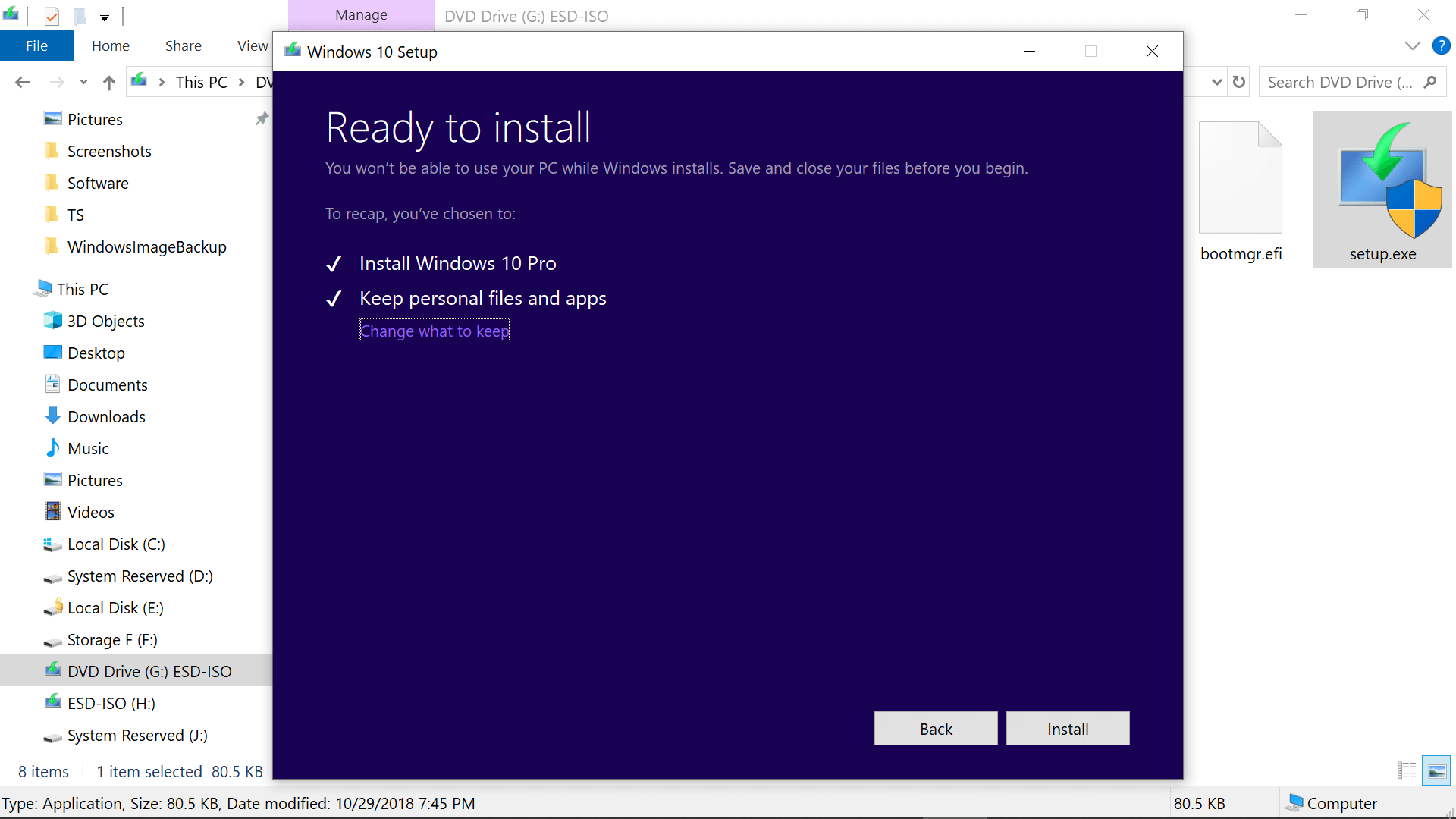
The residual of the in-identify upgrade amounts to waiting most a half an hour for Windows to reinstall, which rebooted our system several times and didn't crave any further intervention from usa.
When completed, yous'll load back into the aforementioned Windows surroundings where you originally started the "upgrade," except with newly installed operating system files which should be issues-complimentary.
After completing the in-place upgrade
As mentioned before, although this reinstallation retains your software and settings, the process creates a Windows.old folder with information from your previous copy of Windows. This folder occupies a large amount of storage and isn't easily deleted directly from File Explorer, though you can browse the contents at C:\Windows.old.
Disk Cleanup can delete the Windows.erstwhile folder also as other temporary installation files used in the setup: Search the Start menu for Disk Cleanup and so click "Make clean up system files" to run a secondary scan that will locate Windows junk files.
When we scanned after the in-place upgrade, Deejay Cleanup found 3.61GB of "Previous Windows installation(southward)" and 225MB of "Windows upgrade log files."
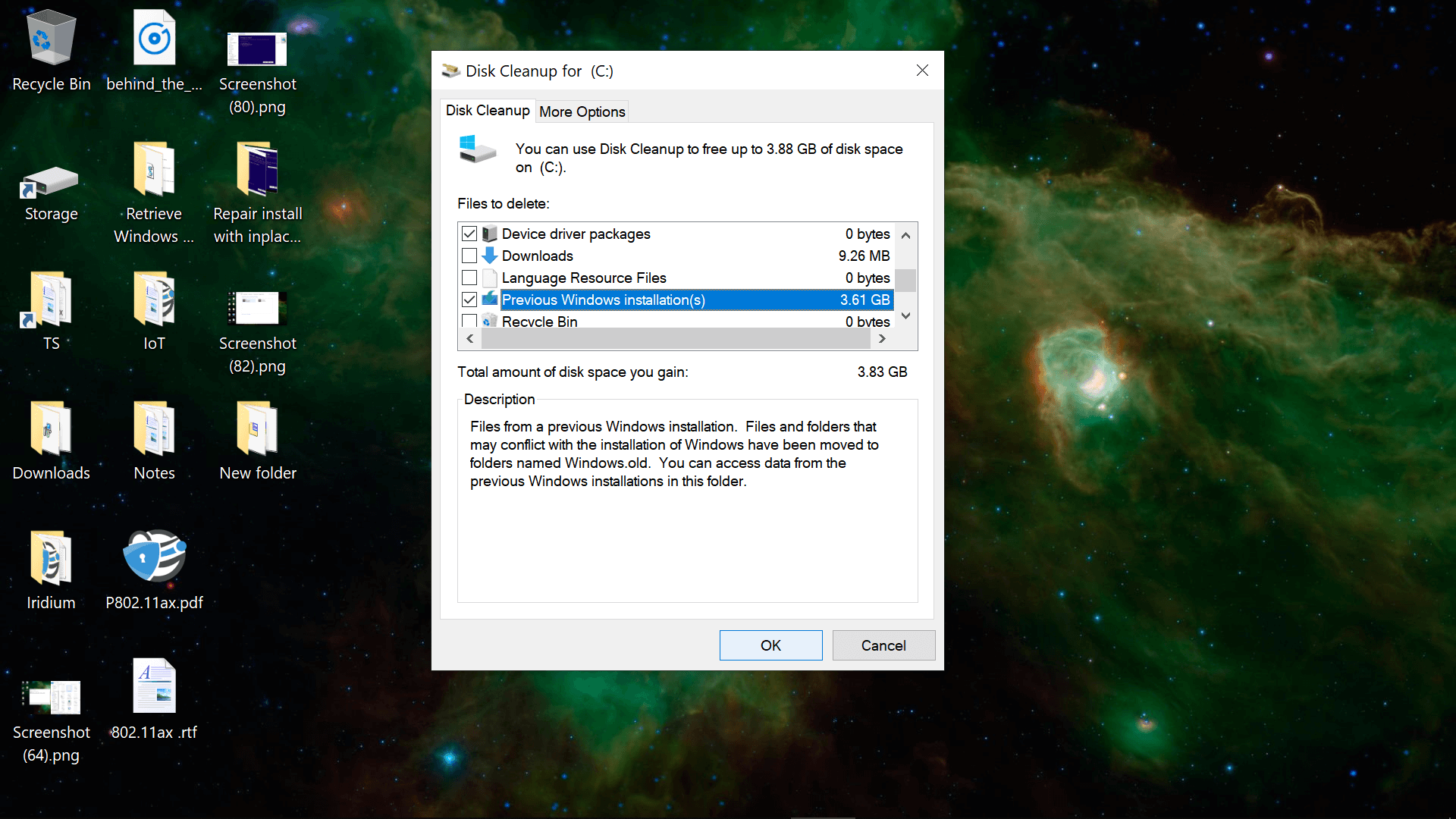
If yous're really low on storage space, we've found that third-party software such as Wise Disk Cleaner will remove more data than Disk Cleanup, and that particular tool even removed more than than CCleaner.
Other than deleting backlog Windows information, yous'll probably have to relog into your Wi-Fi network and you may have to install some Windows updates if you didn't use the most recent Windows ISO. However, that ought to be about the extent of your chores after the in-place upgrade/repair installation.
More Useful Tips
- How to Notice Your Original Windows 10 Production Key
- Windows To Go: How to Install and Run Windows 10 from a USB Drive
- "Run as Administrator": What Does It Mean?
- Ways to Costless Upwards Storage Space on Windows
Will Reinstalling Windows 10 Delete My Files,
Source: https://www.techspot.com/guides/1764-windows-repair-keep-all-your-files-intact/
Posted by: nunezhurasawends89.blogspot.com


0 Response to "Will Reinstalling Windows 10 Delete My Files"
Post a Comment